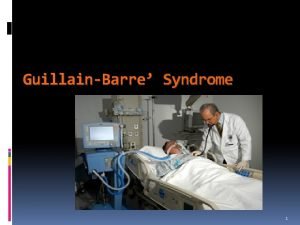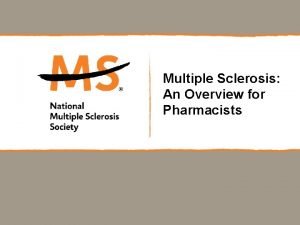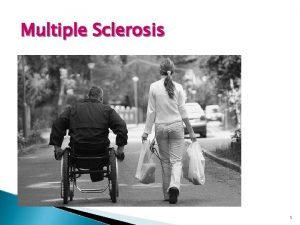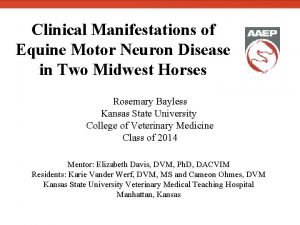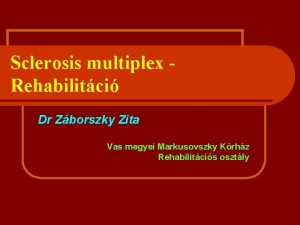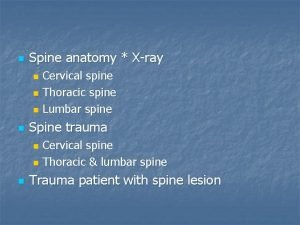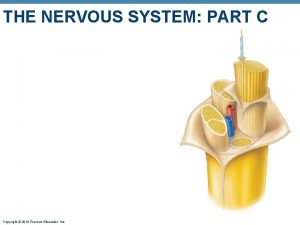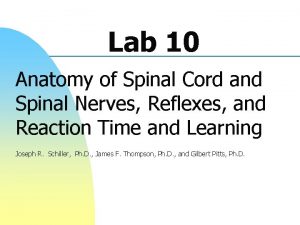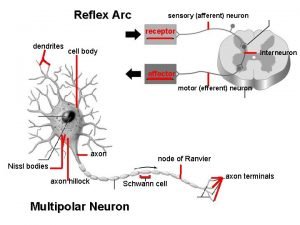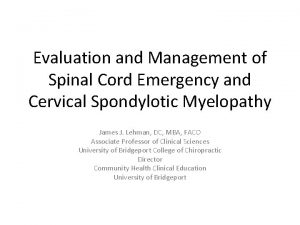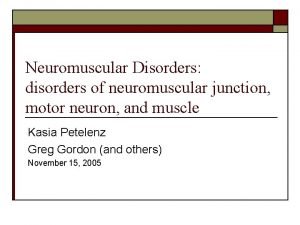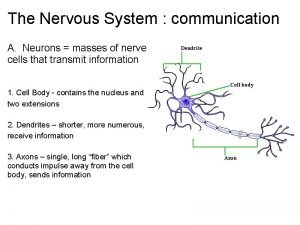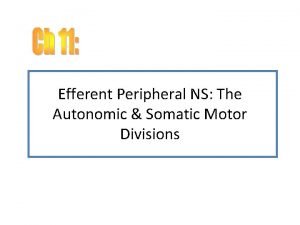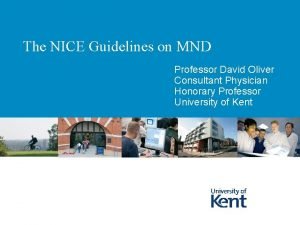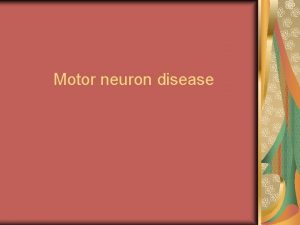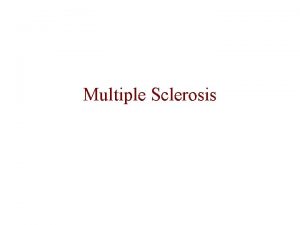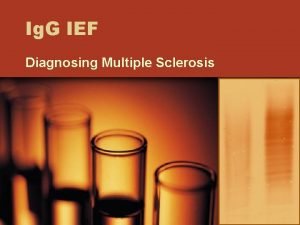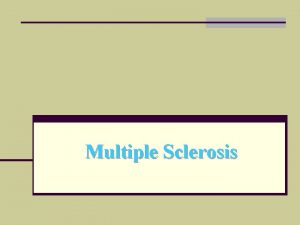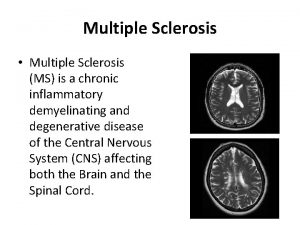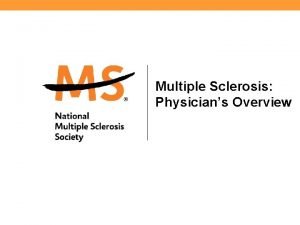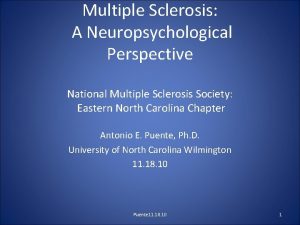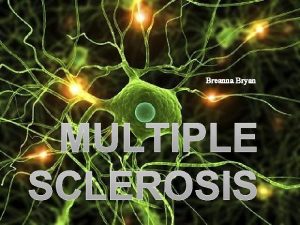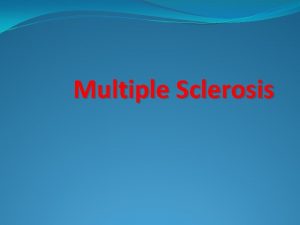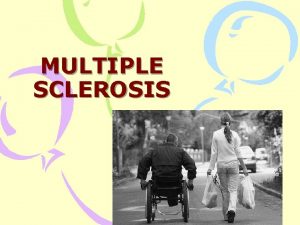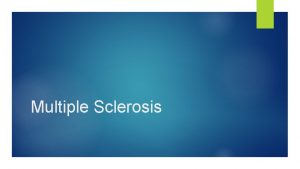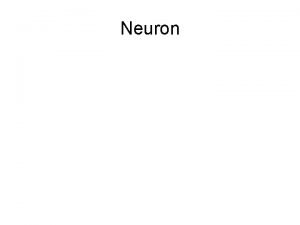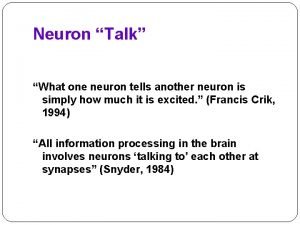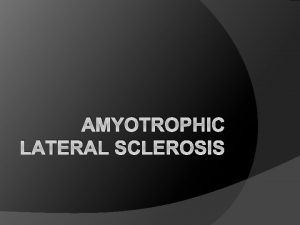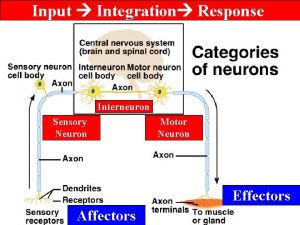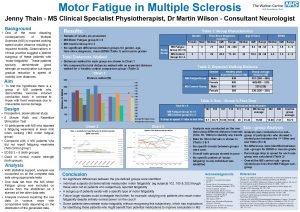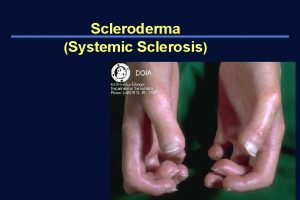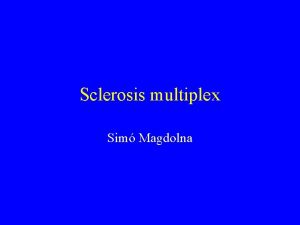Motor neuron disease Multiple sclerosis Motor neuron disease





































- Slides: 37

Motor neuron disease

Multiple sclerosis

Motor neuron disease is degenerative disease which selectively affect motor tract fibers (corticospinal tract+ anterior horn cell) UMN signs LMN signs

Motor pathway cortex motor area Corticospinal fiber & corticobulber AHC Peripheral nerves NMJ muscle motor neuron disease

pathology Degeneration of the neurons

path physiology Sporadic: 90% unclear Inherted: 10% familial ALS, 25% mutation in gene encoding copper zinc super oxide dismutase (SOD 1)

course Is progressive : median survival is approximately 3 y

classification Classic ALS (amyotrophic lateral sclerosis). . UMN+LMN signs others Progressive muscular atrophy Primary lateral sclerosis Progressive bulbar palsy Progressive pseudo bulbar palsy

Classic ALS Mixed upper motor neuron + upper motor neuron signs Early patient may exhibit only LMN signs or upper LMN signs Weakness begin a symmetrical and distally then spread to involve contiguous group of motor neurons Bulbar &pesudobulber palsy involvement. . dysphagea & dysarthria

Noooooo Cognitive Sensory Ocular Autonomic Sphincter dysfunction

diagnosis El Escorial criteria for dx Definitive Probable possible

Electrophysiological NCS: sensory. . N motor: normal or decreased amplitude EMG: denervation

treatment Riluzole : 50 mg bid ( extend tracheotomy free survival by 2 -3 months, not improving the survival or muscle strength Supportive care physiotherapy, respiratory, swallowing…. .

Multiple sclerosis MS is the most disabling neurological condition of young adults

Epidemiology Onset is typically in the mid 20 s, although the dx may be delayed for several years The ratio of f to m 1. 77 to 1 The incidence of MS in blacks residing in the united states is about 25% that of whites High incidence includes all of Europe, North america, New Zealand, southern austeralia but the incidence also increasing in middle east

pathophysiogy Inflamatory rxn causes variable tissue damage Destruction of myelin producing cells (oligodendrocytes) Some cells damaged without remyelination but oligodendrocytes precursors. . remyelinate. . plaque

Risk factors Genetic Infection : viral autoimmune

genetic In general in the united states, the prevalence of MS is about , 1% If a mother has MS, , her children's have a chance 3 -5%. If father has MS, his son has a 1% chance & his daughter a 2% chance Non identical twins has 3 -4% Identical twins: 30%

Clinical presentation Relapsing remitting: the commonest (>one attack in >one site (multifocal) Progressive relapsing Primary progressive Secondary progressive

diagnosis Clinical : typical relapses come on over a few days, lasts for weeks or months , and then clear, over 80% of patients begin with relapses All central nervous system can be affected Typical relapses A-optic neuritis B-myelopathy(spinal cord) C-brain stem &cerebellar

Optic neuritis: clouding or blurring of central vision in one eye loss of measured activity, impair pupillary light reflex, some local pain made worse by eye movement…usually full recovery Myelopathy: often sensory only; numbness &tingling from a certain level on the trunk on down through the rest of the body. if marked. . weakness Brain stem

Each of these relapses may leave some residual After several attacks of various types, a patient may present common deficit Mild reduction in vision in one eye No conjugate eye movements Extensor planter responses &inability to walk heel and toe Reduced vibration sense in the legs Urgency of bladder function

Late stage deficit include: dementia, inability to stand or walk, slurred speech, ataxic, incontinence , and marked sensory loss in hands &legs

Lehrmit sign Athoufs phenomena

Diagnostic workup MRI

Mri is now the dominant laboratory method of diagnosis in MS MS lesions are usually easily detected and often characteristic… Multiple bright lesion in T 2 Contrast enhanced lesion Shape : ovoid Size: >5 mm Site: adjacent to the lateral ventricles, corpus callosum, cerebellum

LP: modest no of lymphocytes <50/mm, total protein <. 8 g/L, elevated immunoglobulin G(Ig. G), level oligoclonal banding on electrophoresis(80%) Evoked potentials: VER, BAR, somatosensory evoked potential

diagnosis Mc. Donald criteria: Confirm lesion >one site +> one attack

Diffrential diagnosis Clinically: Multiple infarctions Autoimmune diseases Vascuilities: behcets Sarcidosis Infection: chronic meningitis

Diseases that cause similar MRI pictures Vascular: vascuilities, small vesseles disease, migraine Infection: HIV. Lyme disease Granulomtous : sarcidosis ADEM

Treatment: Definitive supportive

definitive Six principles of management in multiple sclerosis 1 -relapses with significant impairment of function should be treated with high dose IV corticosteroid 2 -All relapsing remitting patients should be receiving long term immunomodulatory treatments 3 -Secondary progressive need aggressive tt early, late treatment <few years little benefit

4 - primary progressive patients can not be expected to response to any treatment 5 -multiple sclerosis is a life long disease , no specific time when to discontinue treatment once it started, if one modality of treatment fail or not tolerated , another medication should be tried 6 -patients need to be watched for signs of disease activity by clinical or magnetic resonance monitoring or both.

Drug for acute phase Methylpredinsolone 1 g iv for 5 d Side effects:

Drug used for long term management Interferon –B(avonex, betaseron, rebif. . decrease the risk of the attacks by 30%(sc. IM) Side effects: Depression, flu like, hepatitis Copaxon: Widespread articaria

Supportive care symptomatic Spasticity Depression Fatigue Urinary urgency pain

 Jitender mehla
Jitender mehla Concept map for disease process
Concept map for disease process Ms title
Ms title Concept map multiple sclerosis
Concept map multiple sclerosis Equine motor neuron disease
Equine motor neuron disease A motor unit consists of
A motor unit consists of Záborszky zita
Záborszky zita Scleroderma
Scleroderma Aspiration biopsy
Aspiration biopsy Nipple line t4
Nipple line t4 Structure of spinal cord
Structure of spinal cord Princip alternatora
Princip alternatora Somatic motor neuron
Somatic motor neuron Somatic motor system
Somatic motor system Lower motor neuron
Lower motor neuron Site of somatic motor neuron cell bodies
Site of somatic motor neuron cell bodies Motor neuron adalah
Motor neuron adalah Somatic motor cortex
Somatic motor cortex Lhermittes sign
Lhermittes sign Upper motor neuron
Upper motor neuron Umnl and lmnl of facial nerve
Umnl and lmnl of facial nerve Motor neuron
Motor neuron Autonomic nervous system skeletal muscle
Autonomic nervous system skeletal muscle Motor neuron adalah
Motor neuron adalah Paraplrgia
Paraplrgia Somatic motor division
Somatic motor division Baseline
Baseline Advantages and disadvantages of mimd
Advantages and disadvantages of mimd Communicable disease and non communicable disease
Communicable disease and non communicable disease Motor neurone disease symptoms
Motor neurone disease symptoms Ee 216
Ee 216 Three phase synchronous generator
Three phase synchronous generator What is hunting in synchronous motor
What is hunting in synchronous motor Motor parts name
Motor parts name Struktur saraf
Struktur saraf A neuron without terminal buttons would be unable to
A neuron without terminal buttons would be unable to Lateral inhibition
Lateral inhibition Mirror neuron
Mirror neuron

